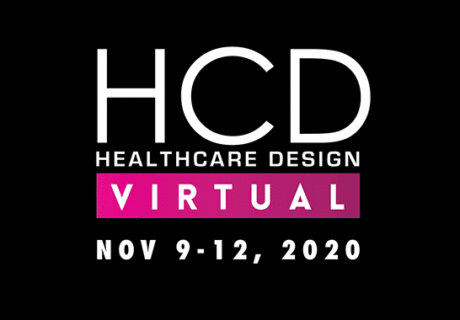HCD Virtual: 3 Changes To Watch In Healthcare Design
Reflecting on what a year 2020 has been for healthcare across the country, representatives from three organizations shared their experiences and some of the design lessons they’re taking with them during the HCD Virtual session, “Titanic Healthcare Shifts That Will Show Up in Tomorrow’s Healthcare Facilities.”
Jon Buggy, healthcare and life sciences principal at RSP Architects, moderated the discussion with Jonathan Cogswell, assistant vice president, facilities services and engineering at Northwell Health, Victoria Navarro, regional director of planning, design and construction at Advocate Aurora Health, and Kerrie Bartel-Christensen, vice president of real estate strategy and operations at Providence Health.
As the speakers reflected on the past year, a theme of evolution emerged as they talked about the shifts they’re seeing in healthcare delivery and how they’re impacting design and planning going forward. Here are three takeaways from their discussion:
- Long-term changes to facility design
One of the biggest challenges facing healthcare organizations at the start of the COVID-19 pandemic was realizing how much wasn’t known about COVID-19 or how facilities should respond, said Cogswell. “We were learning on the fly and creating and recreating solutions,” Cogswell said, recalling that for one facility, he had to make a trip to the store to buy baby monitors to place in patient rooms, which had solid wood doors without windows, so that staff at the nurses’ station could see patients without always having to enter the room.
Reflecting on the lessons he’s learned, Cogswell said four big infrastructure needs stand out to him: dialysis services, negative-pressure rooms, oxygen and gas systems, and patient visualization. For example, one of Northwell Health’s facility saw oxygen needs rise 300 percent in 72 hours—a spike which resulted in the hospital losing piped oxygen for 15 minutes. “It was the worst 15 minutes of my life,” he said.
As cases waned over the summer, Cogswell said the system took the opportunity to start addressing these needs, including doubling its dialysis capacity from 75 to more than 150 beds, overhauling it oxygen system and distribution, and submitting proposals to the state department of health to address the need for more negative-pressure rooms.
Furthermore, he said that the COVID-19 pandemic has “fundamentally change healthcare.” For example, services like telehealth—and the infrastructure to support it—that had been incrementally growing have now been pushed to the forefront. At Northwell, the no-show rate for behavioral health appointments has dropped from 25 percent to 2 percent in part due to increasing availability and adoption of telehealth. For long-term changes to facility design, he noted the importance of layering in more mechanical systems and re-evaluating the size of private patient rooms to better accommodate two patient beds in a room. “We have to prepare for an eventual surge in the future,” he said.
- Addressing gaps in care
In addition to changes to facility design, the pandemic has also highlighted the need to address social inequities and disparities in access to care, with specific populations reporting higher rates of infection or inadequate testing or treatment services. “We need to address the gaps in care,” Bartel-Christensen said. Advocating for a proactive approach, she said conversations about the facility’s role should move from master planning to community master planning to find solutions. “Round out your projects” she said. “I don’t just want to talk about healthcare, I want to talk about food, housing, etc.”
Navarro agreed healthcare organizations should continue to look for ways to evolve to support their communities. Prior to the pandemic, Navarro said Advocate Aurora has been focusing on expanding its programming to address growing community needs, often by working with organizations outside healthcare. For example, its Advocate Trauma Recovery Center, in partnership with the Illinois Criminal Justice Information Authority, delivers comprehensive services for survivors of violence. Going forward, she said healthcare organizations should be considering how they can impact social issues, such as safe housing, transportation, and access to healthy food. “It’s so important as we think about how we’re helping our communities,” she said.
- Resiliency
Concurrent with the COVID-19 pandemic, 2020 also saw its share of natural disasters, from wild fires to droughts to hurricanes, reinforcing the importance of resilient design, Bartel-Christensen said. For example, one of Providence Health’s hospitals had to adjust its ventilation system from using 90 percent outside air to 10 percent as wildfires impacted air quality across the region. “Our planet and healthcare are interconnected,” she said. As part of its efforts, Providence has set a goal to become carbon negative by 2030. “We’re seeing these climate changes coming at us faster,” she said. “It’s time for healthcare to step up.”
Missed HCD Virtual? Don’t worry. Registration is still open, and all sessions will be available on demand through the end of the year. Visit HCDvirtual.com for more information.
Anne DiNardo is executive editor of Healthcare Design. She can be reached at anne.dinardo@emeraldx.com.

